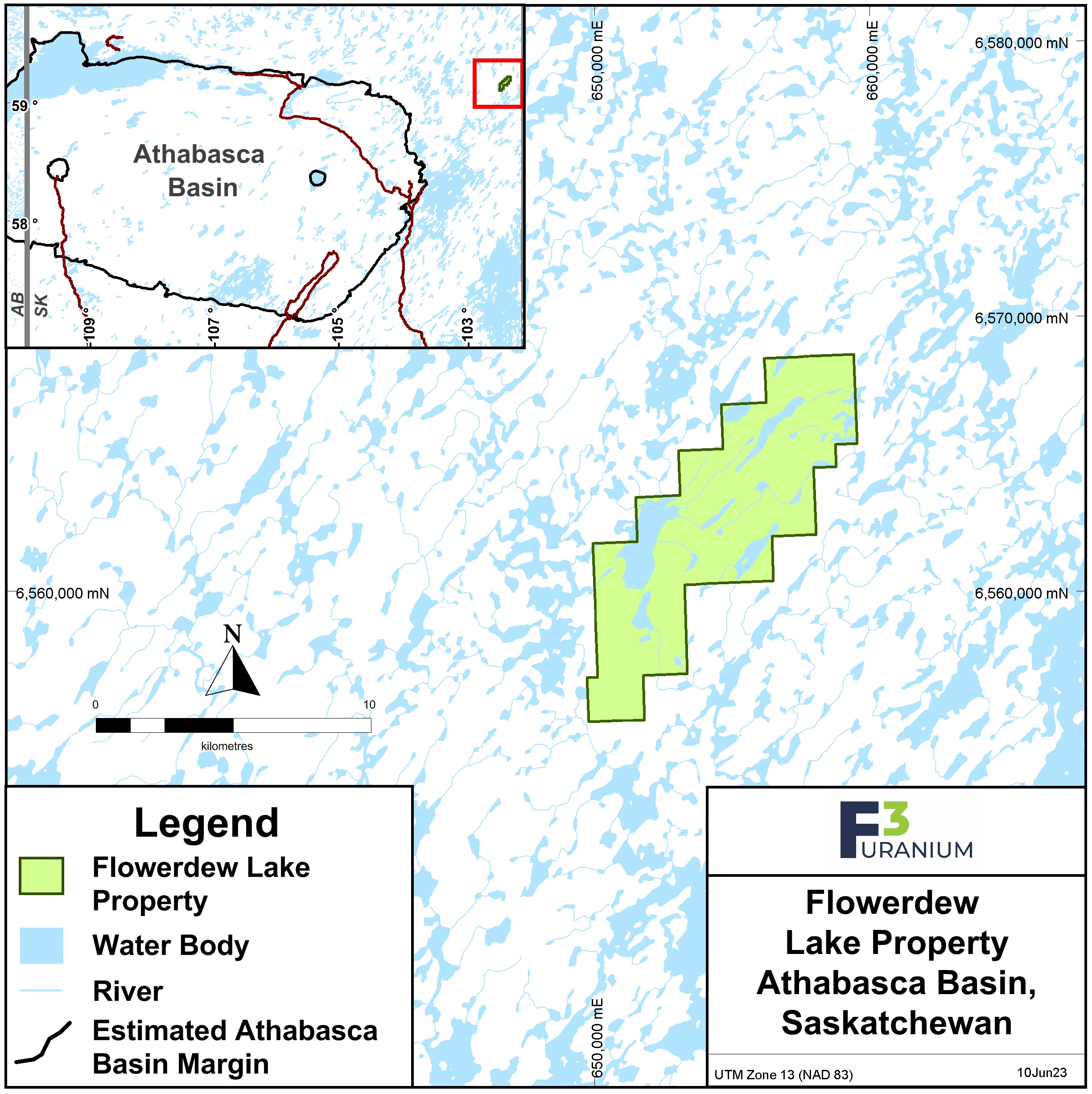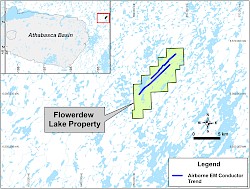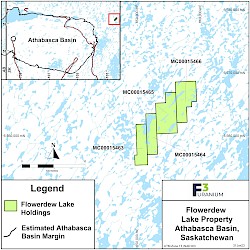NE Athabasca Basin
Flowerdew Lake
Key Points of Interest
- Located along the Wollaston-Mudjatik domain transition zone, which hosts many of the major unconformity type uranium deposits in the Athabasca.
- Area mapped as semi-pelitic gneiss in contact with felsic intrusives.
- Interpreted basement formational EM conductors with evidence for cross-faulting from offsets in magnetics, electromagnetics and resistivity surveys.
- Ground resistivity data that displays significant resistivity lows that correlate with lithologic contact zones and portray possible clay alteration, a favourable environment for uranium precipitation.
- Area has never been drill tested.
-
The property consists of four contiguous claims totaling 5,667 hectares cover an area that is approximately 13km by 4km in size. The property is located along the regional geological trend to the northeast of the Rabbit Lake, Eagle Point and Collins Bay uranium mines.
-
The immediate area of the claims has little in the way of historical recorded work. Denison Mines and Amax Exploration were very active through the 1970’s to the east and south of the property
In 2005 Triex Minerals Corp., in a joint venture agreement with Roughrider Uranium Corporation, conducted an airborne DIGHEM survey that covered in part the Flowerdew Lake property. An interpretation of the results revealed moderate to strong formational (correlation with magnetics) electromagnetic conductors trending northeast. There are several inferred north-south breaks that are probably faulting as evidenced by the offset in magnetic anomaly and conductor axes. A possible fold nose and overturned strata were also interpreted.
In 2006 Triex followed up the airborne results with a detailed induced polarization survey. Interpretation showed a significant northeast trending resistivity low zone that may correspond with a contact between semi-pelites and granite gneiss. A correlation was also found between a northeast trending moderate magnetic high zone and the resistivity low zone. This could indicate mineralization within the pelite-granite gneiss contact zone.




